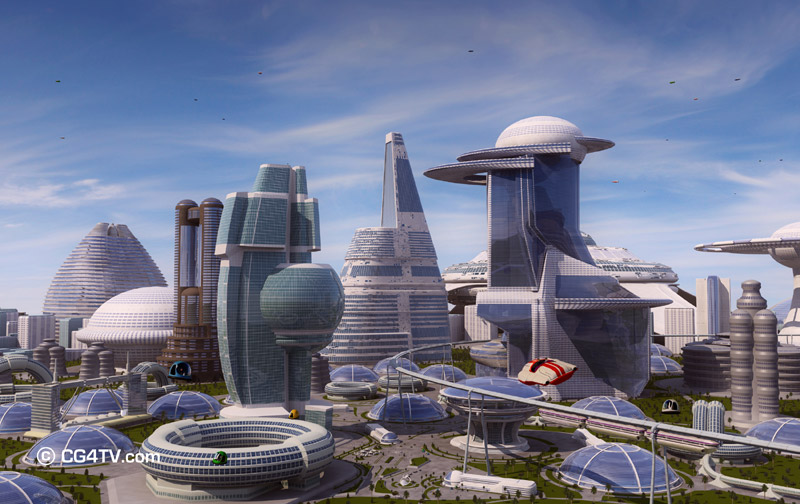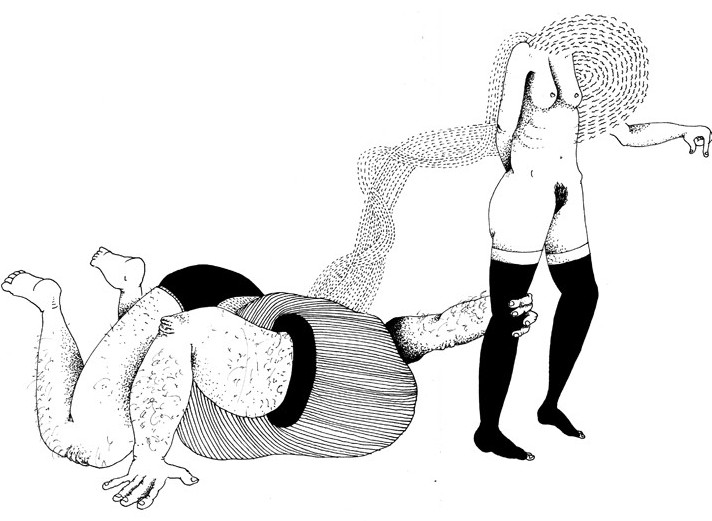Friday, December 19, 2008
God is a Verb
for God, to me, it seems,
is a verb
not a noun,
proper or improper;
is the articulation
not the art, objective or subjective;
is loving,
not the abstraction "love" commanded or entreated;
is knowledge dynamic,
not legislative code,
not proclamation law.
not academic dogma, not ecclesiastic canon.
Yes, God is a verb,
the most active,
connoting the vast harmonic
reordering of the universe
from unleashed chaos of energy.
And there is born unheralded
a great natural peace,
not out of exclusive
pseudo-static security
but out of including, refining, dynamic balancing.
Naught is lost.
Only the false and nonexistent are dispelled.
-Buckminster Fuller-
Saturday, December 13, 2008
The Auto Engine of the Future?
--
Brickley Engine, The
By CLIVE THOMPSON
The auto industry worldwide is scrambling for ways to make cars consume less gas, but mostly it pursues the same few concepts — like making cars lighter and smaller, using alternative fuels or creating hybrid designs that use electricity. Mike Brickley has another idea: why not rethink the internal-combustion engine itself?
Five years ago, Brickley, a self-taught “engine inventor” in Austin, Tex., decided to give it a try. He realized that one of the biggest drags on engine efficiency is friction: whenever two parts interact with each other, they generate heat and drain energy out of the system. So he began designing a new type of engine that reduced friction by doing away with several traditional parts. In the Brickley Engine — as he calls it — there are no piston skirts and several fewer crankshaft and crankpin bearings.
What’s more, the cylinders are connected through a pinned joint that rotates a comparatively small amount. The resulting device has a curious, flattened appearance: two sets of pistons face away from each other and punch in opposite directions, joining in the center to drive the engine’s shaft.
This configuration produces 35 percent less friction than a regular engine. Brickley projects that this would give the engine up to 20 percent better mileage than a regular car.
If you were to burn diesel fuel in the Brickley Engine, it would use almost 50 percent less fuel than a normal gas-powered engine, with greatly reduced emissions. “It’ll work in anything that burns fuel — trains, tractors, automobiles, you name it,” he says.
A nation of Brickley-equipped vehicles could satisfy the Kyoto Protocol’s demands for greenhouse-gas reduction several years in advance.
Brickley received a patent for the engine last year and this year began working on a prototype to place in a compact car — to prove that his design performs as well as his calculations predict
But one big question remains: Can Detroit really embrace such a weird new engine — especially when the Big Three are collapsing? “It’s not great timing,” Brickley admits. In the quest for fuel efficiency, the real engineering challenges may not be physics but politics.
Source: Year in Ideas 2008
Tuesday, December 9, 2008
A Bright Future? What to Expect from the Next 40 Years on Earth

A brief summary of ideas laid out in a new futurist book, Technology’s Promise: Expert Knowledge on the Transformation of Business and Society, by William E. Halal:
2010: The World Online. The decade should continue to focus on intelligent advances in information systems and e-commerce. The world in 2010 is almost certain to be smarter, faster, and fully wired, setting the stage for the breakthroughs to come.
2020: High-Tech Arrives. This decisive period should see major breakthroughs in high tech. Green business, alternative energy, and other practices are likely to ensure ecological sustainability. AI should permeate life, and the next generation of quantum/optical computing will permit huge advances in telemedicine, virtual education, and e-government. Biotech should mature, providing personalized medicine, genetic therapy, cancer cures, and other advanced health care.
2030: Crisis of Maturity. Industrialization will reach most developing nations at this point, with as many as 5 billion people living at modern levels of consumption. Although technological powers will be vast, intercultural conflict, weapons of mass destruction, and threats of environmental collapse are likely to grow into such challenges that they force a global shift in consciousness.
2040-2050: Global Order. Civilization has withstood the Fall of Rome, World Wars I and II, and threats of nuclear holocaust, and it will probably survive globalization. The challenges facing civilization are likely to be resolved to form a modernized, fairly harmonious globe, somewhat like a far larger and more diverse version of the United States or European Union. Local wars, ecological disasters, and other mishaps will continue, of course, but limited to the normal dysfunctions of any social system.
Sunday, December 7, 2008
What you Don't Know about Money
It is supposed to represent a resolution of both public and private debts.
However, since it is not redeemable for gold, silver, or anything else which actually exists, but rather for itself only - 95% of the money in circulation DOES NOT REPRESENT ANYTHING.
A mere 5% of money on the planet represents value.
Money gains its power through its consideration as legal tender by the courts. That is, the law will not enforce other forms of debt resolution, if money has been offered.
By removing currency from a gold standard format, money has now become the representation of debt, and thereby synonymous with debt. Money is debt and debt is money.
Money therefore only represents money other people owe banks or the government because they are the only ones who can issue debt.
And, since governments and banks are the sole lenders, they therefore are the sole producers of money.
People are used to hearing about the government printing money, but the banks in practice do the same thing millions of times every day.
Moreover, how much money (debt) can be issued, that is, if it is entirely in the hands of the government and banks to do so?
Well, if there is nothing tangible, like the amount of gold it has to be based on, even loosely - what could the limits be?
Furthermore, the amount of money in the world is never the same at any given moment because if money is debt, then every time someone takes out a loan or opens up a credit card account, creating debt, more money is generated - yes from nothing.
There are thus no limits to the amount of money that can be issued.
As a result, the calculable number of money in existence is in constant flux, always on the rise whether lending occurs or loans are defaulted (except when no lending occurs across the board. But, this has never happened because central government banks are always lending, even when banks are hard-pressed).
This places the world economy is an incredibly unstable position.
For, this means that 95% of the loans which are issued by banks are based solely on promises of other borrowers to pay back their loans - and it is THIS promise that the entire world economy depends on for its survival.
The wormhole continues.
 An important result of this is that when people are asking for loans, and banks are lending them, a lot of money is being created (albeit out of thin air). More money grows the economy and when the economy grows people's quality of life improves.
An important result of this is that when people are asking for loans, and banks are lending them, a lot of money is being created (albeit out of thin air). More money grows the economy and when the economy grows people's quality of life improves.In this scenario, the modern day money system seems quite brilliant. We are simply growing prosperous out of our own will to become prosperous!
However, there are three fundamental flaws in an economy where money is debt and debt, money.
For our modern-day economy to exist people cannot pay off all their debts.
This is because the debt is used as leverage to produce loans and credits that are the core source of money. If no one had debt, the economy would shrink to only 5% of its current size (remember that 95% of all current money represents debt). Without debt - there would be virtually no money.
However counterintuitive this may be, because shedding debt is good for personal finances - this is not the case for the economy as a whole.
The second flaw is people cannot pay off zero of their debt either.
If everyone defaulted on their loans, banks would replace borrower's debt with lender's debt. It is not sustainable for money to be manufactured by the bank on the basis of money the bank owes itself. It cannot be leveraged to create loans. Banks wouldn't be able to lend and the government could only last so long on its own. New money would effectively disappear (though the demand for it certainly would not).
The final flaw is our economy cannot sustain itself unless people are lending and consuming debt, perpetually and at an ever-increasing rate - and sometimes this just doesn't happen.
People deposit their money in the bank under the belief that it will be safe at all times. But, if other people who the bank is lending to cannot pay back their loans, this threatens the the banks liquidity, or cash reserves, which although the federal government covers up to $250,000 of deposits, can eventually leave banks unable to lend without risking their very existence and directly impeding economic growth.
Now, it is inevitable that at some time large numbers of people will both default on loans and yank their money from the bank.
This leaves banks with little to no issuable debt, and because debt is money, little to no money.
When vast sums of money vanish in a matter of days banks cannot lend and the economy is left in tatters.
Ergo, it seems, to have a profitable economy a magic balance must be stuck between some debt being paid, some debt not being paid, and there being an extraordinary faith that consumers can cover and bankers can issue more debt than the day before, and way more debt than could ever be paid off at once, everyday.
To add salt to the wound, it is worth noting that most debt carries with it interest as well as the principal balance.
Since the amount of money in existence is only based on the principal, new debt must be manufactured to pay for the interest off the old debt.
This has to occur because without interest, banks could not cover operating costs, and could not lend.
So debt is created to pay for debt. And because that debt ALSO carries with it interest, the cycle never ends. It is incessant.
Our position is thus an ever precarious one: Debt or Poverty.
Or, in the words of the Credit Manager of the Federal Reserve Bank of Atlanta Georgia:
This is a staggering thought.
We are completely dependent on the Commercial Banks. Someone has to borrow every dollar in circulation, cash or credit. If the banks create ample synthetic money, we are prosperous; if not, we starve.
We are, absolutely without a permanent money system. When one gets a complete grasp of the picture, the tragic absurdity of our hopeless position is almost incredible, but there it is.
--
For more watch this: What Money Is.

.jpg)
.jpg)
.jpg)



.jpg)